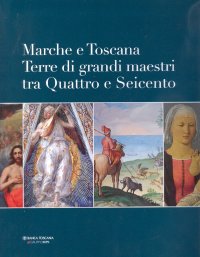Beato Angelico
Firenze, Palazzo Strozzi, September 26, 2025 - January 25, 2026.
Edited by Carl Brandon Strehlke.
Testi di Stefano Casciu, Marco Mozzo, Angelo Tartuferi.
Venezia, 2025; bound, pp. 456, 300 col. ill., cm 24x29.
cover price: € 80.00
|
Books included in the offer:
Beato Angelico
Firenze, Palazzo Strozzi, September 26, 2025 - January 25, 2026.
Edited by Carl Brandon Strehlke.
Testi di Stefano Casciu, Marco Mozzo, Angelo Tartuferi.
Venezia, 2025; bound, pp. 456, 300 col. ill., cm 24x29.
FREE (cover price: € 80.00)
Marche e Toscana. Terre di grandi maestri tra Quattro e Seicento
Ospedaletto, 2007; bound, pp. 320, col. ill., col. plates, cm 25,5x29.
FREE (cover price: € 77.00)
Segni dell'Eucarestia
Edited by M. Luisa Polichetti.
Ancona, Osimo, Loreto Jesi, Senigallia, Fabriano e Metelica, 23 giugno - 31 ottobre 2011.
Torino, 2011; paperback, pp. 221, b/w and col. ill., cm 24x28.
FREE (cover price: € 32.00)
The Face of the Dead and the Early Christian World
Libreria Editrice Viella
Edited by Foletti I.
English Text.
Roma, 2013; paperback, pp. 192, b/w ill., cm 17x24.
(I Libri di Viella. Arte).
series: I Libri di Viella. Arte
ISBN: 88-8334-994-6 - EAN13: 9788883349942
Subject: Essays (Art or Architecture),Essays on Ancient Times,Painting,Religious Architecture/Art
Period: 0-1000 (0-XI) Ancient World,1000-1400 (XII-XIV) Middle Ages
Extra: Religion Art
Languages: 
Weight: 0.54 kg
The first part of this book looks into the portrait and its function, and the reason for which Late Antiquity, following a custom it inherited from previous eras, covered itself with individual images of the deceased. As in previous eras, the portrait appears, above all, to be an attempt to express the individual in his or her entirety; the techniques and "instruments" perfected in the course of the the 3rd century, however, lead to divergent formal and conceptual results.
The second question, answered more briefly, deals with the perception and representation of the dead body as a whole, defined by David Le Breton as "la souche identitaire de l'homme." The question asked is a fundamental one, since we are confronted with humanity itself after its passage to that which lies beyond: does the body become just a memory or does it preserve the real presence of the person who once existed?











